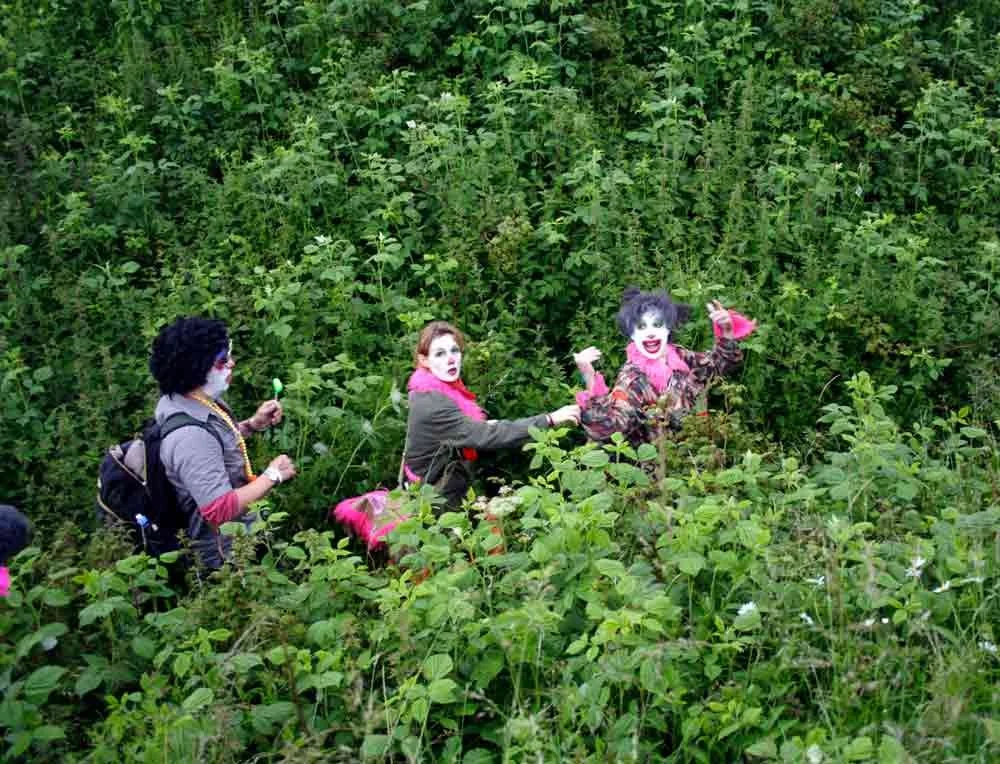During her studies at the University of Leuven, where she graduated in 1989 with the Highest Distinction, her interest for research grew. In 1993, her M.A. dissertation on an unknown fifteenth-century incunable (an early printed work held by the Royal Library of Belgium) was awarded a prize by the Royal Flemish Academy of Belgium, Class of Fine Arts. After graduation, Barbara Baert won a Flemish Community specialization scholarship to the Università degli Studi of Siena (Italy), where she worked with professors in the fields of stylistics (describing and researching visual idioms) and of iconography (describing and researching thematic traditions in the arts). This specialization year provided her not only with expertise in Italian painting but also with an itch for an integrative approach to Art History that would combine both form and content.
A position as assistant in the tutorial service brought Barbara Baert back to the University of Leuven, where she devoted herself to advising first-year students. Her inspiring teaching is still valued to this day. While holding this post, Barbara Baert obtained a B.A. in Philosophy and, under the supervision of Professor Dr. Maurits Smeyers, she began to work on a doctorate on the cult of relics that would have a major impact on the scholar community in her field. The extent and ambition of this project were celebrated by a foreign colleague with the ironic description of “The glorious mistake of a pioneer.” The resulting book, A Heritage of Holy Wood (Leiden, 2004), has now become a reference work. It lays the basis of Baert’s characteristic ‘iconological’ method: a method that combines in art history, the history of ideas, theology, literature, and the visual arts.
In 2016, Baert won the prestigious Francqui Prize for her "bold approach to and pioneering work in medieval visual culture and the worship of relics."
THE CREATIVE PROCESS
How did you come to study medieval iconology, sacred topography, visual anthropology, relics and devotion, and medieval gender? When did you realize you wanted to study images and image-making?
BARBARA BAERT
My work never avoids large-scale questions. My work links knowledge and questions from the history of ideas, cultural anthropology, philosophy, and in some measure also from psychoanalysis, and shows great sensitivity to cultural archetypes and their symptoms in the visual arts. My usual point of departure is the art of the past, especially the Middle Ages and early modernity, but where relevant I also engages with contemporary art.
My investigations into the way that cultural symptoms (such as texts, or elements of oral culture) are ‘turned into’ visual works, are widely regarded as a model for further research. This approach has its origins in her dissertation on the relics of the True Cross in Western Europe, published as A Heritage of Holy Wood (Leiden, 2004). Now an important work of reference, it was then a methodological trailblazer. One person called it the glorious mistake of a pioneer!
I aim a determined interdisciplinary dialogue within the humanities: the methodological space between text and image, the impact of the sensorium in the visual arts, and finally critical reflection upon her own discipline.
From the first angle, I have conducted much work into the body as medium in text and image. My research into the issue of ‘touch’ in the iconography of biblical women (Mary Magdalene; the woman with an issue of blood) has contributed to a better understanding of gendered taboos of touch and blood. An important concern in this group of publications on corporality is the role of relics, on the one hand, and, on the other, of textiles as a second skin. In these projects I worked comparatively across the cultural boundaries of Europe.
My familiarity with research questions on the impact of touch, on textiles, and on the body’s liminal zones has secondly led to projects on the human senses.
The latest challenges are the representation and experience of the senses that escape the visual medium, such as scent and wind, and can only be visualized indirectly. My recent book on these themes is Pneuma and the Visual Arts in the Middle Ages and Early Modernity. Essays on Wind, Ruach, Incarnation, Odour Stains, Movement, Kairos, Web and Silence. This deals with the complex relationships between the human person and their ecological environment, the person and their body, the spiritual relationship between visible and invisible in the visual arts. I proposed the phenomenon of ‘wind’ as a paradigm for research into the image as such.
This is actually developing in an international project on Kairos or the Right Moment. Nachleben&Iconology
My third approach is critical reflection on the foundations and the future of my discipline. This is an angle, I try to implement in my teaching (infra).
THE CREATIVE PROCESS
Were you born into a family of art historians or teachers?
BAERT
I was raised with a great interest in the visual arts. My father, Paul Baert is a painter. Frequent journeys during my childhood through Southern Europe gradually drew her heart towards medieval and Renaissance art. When I graduated from the Latin and Greek stream of the Spijker Instituut in Hoogstraten (1979–1985), my teachers advised her to pursue a degree in Classics, but I did not hesitate to enroll in the Art History programme at the University of Leuven.
Art History is the only discipline for me, that gives me the opportunity to think freely and critically, to do research at the borderlines of all disciplines in the humanities and to reflect on new hermeneutics.
The discipline of Art History is a house of many mansions. A single field that deals with questions about form and beauty through time, as well as about content (iconography), cannot but embrace diversity. Art historian James Elkins (School of the Art Institute of Chicago) once wrote: “It is a sign of the health of Art History that it can address large-scale questions”.
This preoccupation on the foundations and the future of my discipline has taken shape in a series of reflective essays on the discipline within the purpose-made series Studies in Iconology (Peeters Publishers).
This series shows a teacher protecting an intellectual sanctuary and by analogy cherishing a discourse that dares to interrogate the academic genre itself. I defend an academic practice of ‘fluidity’ and empathy rather than one of boundaries and a fixation on the ‘self’ in my essay "Echo."
THE CREATIVE PROCESS
What are your views on the future of communication and how technology is changing the way we communicate, read, interact with the world and our imaginations? What are your views on the importance of creativity and the humanities?
BAERT
One last question remains: what name to give such an interdisciplinary dialogue in the current juncture? German uses Bildwissenschaften. French currently prefers Anthropologie visuelle. Flemish retains the original term iconologie. Whatever the case may be, the exceptional energy of Art History as a whole perhaps lies in its unclassifiability. As the Italian aesthetician Giorgio Agamben has fondly remarked: it is la scienza senza nome. The current richness of Art History in the Low Countries is perhaps explained by Belgium’s key position and its three language zones: constantly subject to dynamic influences, constantly open to friendly ‘contagion’, and constantly alert to new initiatives.
For this reason, I most recently founded a new Annual where the opportunity to think freely and critically, to do research at the borderlines of all disciplines in the humanities and to reflect on new hermeneutics; is combined. This preoccupation on the foundations and the future of my discipline New Series Recollection.
Baert on Arachne in Berlin
Mia Funk is an artist, interviewer and founder of The Creative Process.





















































